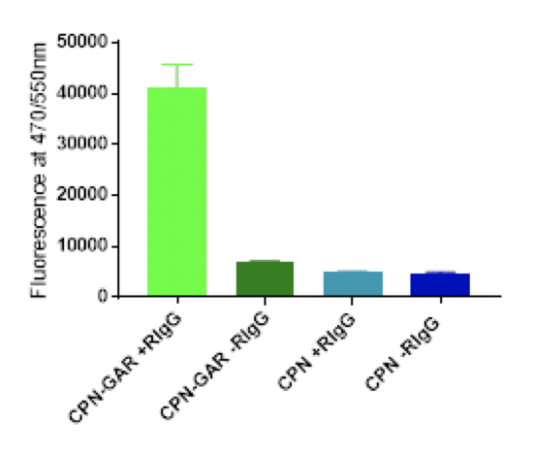Our bioimaging probes can be used in standard ELISA for the detection of proteins with improved performance. We have demonstrated how our CPNs™ increase the intensity of signals, while remaining stable over days or weeks. Their outstanding stability and resistance to photo-bleaching allows assay plates to be read long after storage, without the need for further staining. In addition, our CPNs™ have been shown to be 100-1000x brighter than Quantum dots and Qbeads, which allows for greater assay sensitivity. The magnetic qualities of CPNs™ can also be exploited in ELISA using magnets, further increasing the propensity for binding at the plate surface. The combination of these two unique properties dramatically increases the detection window (see Binding assays).
ELISA can be undertaken from 4°C to room temperature. CPNs™ maintain brightness across this temperature range, which improves the sensitivity of the assay.

CPNs™ perform well in standard ELISA giving robust fluorescent read outs and little non-specific signal from negative control wells. The ELISA in the figure above was carried out with unlinked CPNs™ or CPNs™ linked to antibody to detect the presence/absence of analyte in a test sample. CPN-GAR+RIgG: CPNs linked to detection antibody with analyte present in sample. CPN-GAR -RIgG: CPNs linked to detection antibody with no analyte in sample. CPN +RIgG: unlinked CPNs with analyte present in sample. CPN -RIgG: unlinked CPNs™ with no analyte in sample.